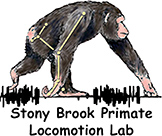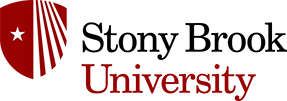Motion capture system
Digital video from the cameras is streamed to solid state hard drive buffers on a PC and synchronized in ProCapture . While the cameras can operate at a range of speeds, they are most commonly used at 150 frames per second, with shutter speed set at 3000ms, and a resolution of 1248 x 1082 pixels. At the recording frequency and resolution used, the buffers on the solid state drives hold up to 40 minutes of continuous video recordings, but only events of interest are exported after the recording session for permanent storage. A trigger is used when the animals pass through the calibrated space, and a short time interval around the trigger signal is saved, usually 2s prior and following the trigger signal, resulting in events that are 4s long. These events are imported into ProAnalyst software (Xcitex, Woburn, MA) for digitizing.
Prior to and again immediately after each recording session, the calibration fixture is recorded with each camera. An additional cross-shaped marker is placed on the corner of one of the force plates to mark the origin of the calibrated space (0,0,0 coordinates). Calibration fixture recordings are repeated at the end of recording sessions in case a camera had moved during the session due to building vibrations. Superimposition of video images of stationary objects in the calibrated area (e.g., the edges of the force plates) recorded early and images recorded late in a session allow us to identify even small shifts in camera positions. However, this happened rarely.
Still frames are taken of a cardboard-mounted 88x73cm rectangular checkerboard. The checkerboard is held in front of each camera such that it is parallel to the lens and at a distance that it fills the image completely. These checkerboard images are used later to create lens correction filters in ProAnalyst that allow us to remove peripheral distortion (‘fisheye effect’) from the digital video images.

